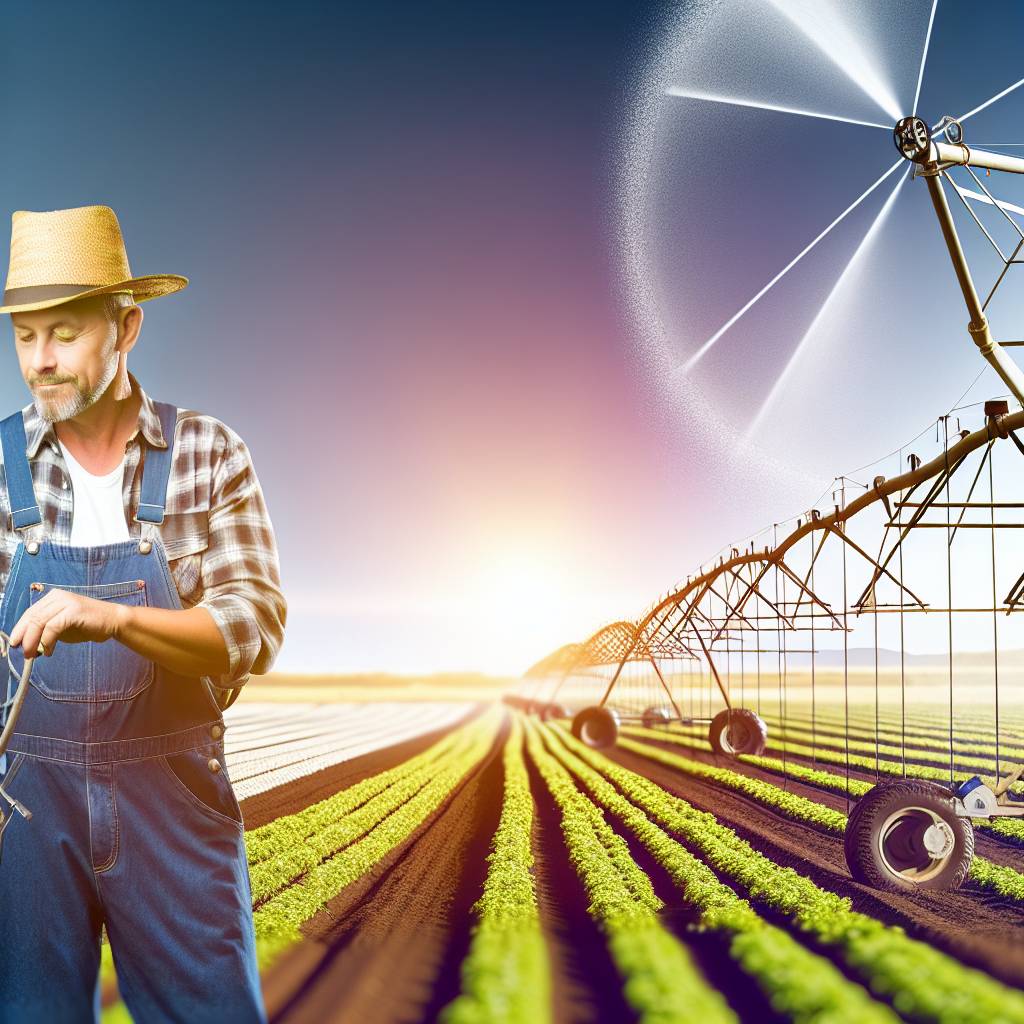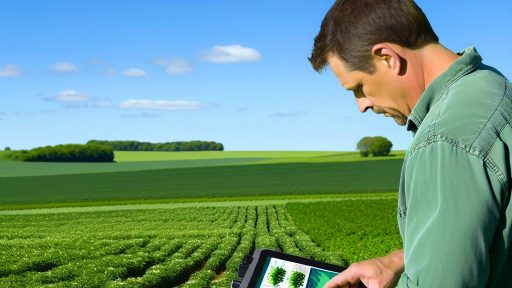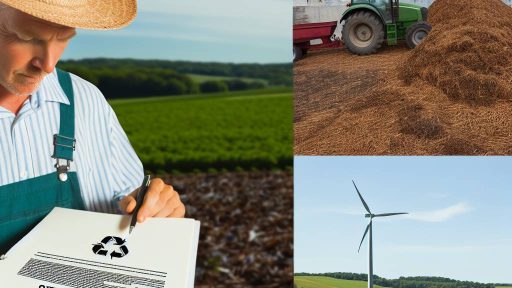Introduction to Agroforestry and Its Importance in Water Management
Agroforestry integrates trees and shrubs into agricultural landscapes.
This practice enhances environmental sustainability and agricultural productivity.
Water management is a crucial component of agroforestry systems.
Farmers face increasing challenges related to water scarcity and distribution.
Agroforestry offers innovative solutions to these water-related issues.
Benefits of Agroforestry for Water Management
One significant benefit is improved soil moisture retention.
Trees act as a barrier, reducing evaporation from the soil.
This leads to healthier crops during dry periods.
Additionally, tree roots help to stabilize the soil.
This stabilization reduces erosion and promotes water infiltration.
Enhancing Water Availability
Agroforestry systems can capture and store rainfall efficiently.
For instance, planting trees in contour patterns slows water runoff.
Likewise, these patterns reduce flooding risks in agricultural fields.
Moreover, integrating riparian buffers along waterways enhances filtration.
These buffers protect water quality by trapping sediments and pollutants.
Transform Your Agribusiness
Unlock your farm's potential with expert advice tailored to your needs. Get actionable steps that drive real results.
Get StartedPromoting Biodiversity and Ecosystem Services
Agroforestry fosters biodiversity, contributing to resilient ecosystems.
Biodiverse systems can better withstand climate variations and pests.
Furthermore, diverse root systems improve soil structure and health.
Healthy soils retain more water, benefiting surrounding crops.
In this way, biodiversity supports overall agricultural resilience.
Adopting Agroforestry Practices
Farmers can start by selecting suitable tree species for their region.
Choosing native or drought-resistant trees can maximize benefits.
Next, they should design planting patterns to optimize water management.
This might involve using alley cropping or silvopasture techniques.
Regular monitoring and adjustments will ensure long-term success.
Overview of Water Scarcity Issues in US Agriculture
Understanding the Importance of Water
Water is vital for all agricultural practices.
It supports plant growth and sustains livestock.
Without adequate water, crop yields suffer significantly.
Current Water Scarcity Challenges
Many regions in the US face critical water shortages.
Climate change exacerbates these issues through altered rainfall patterns.
Furthermore, prolonged droughts impact farming operations.
Implications for Farmers
Water scarcity directly affects agricultural productivity.
Farmers may experience increased irrigation costs.
Additionally, competition for water resources intensifies.
Regional Variations in Water Supply
Different areas experience varying levels of water availability.
The West struggles with droughts, impacting major agricultural zones.
In contrast, the Midwest benefits from a more stable water supply.
Economic Consequences
Water scarcity threatens the livelihood of many farmers.
It can lead to higher prices for consumers.
Showcase Your Farming Business
Publish your professional farming services profile on our blog for a one-time fee of $200 and reach a dedicated audience of farmers and agribusiness owners.
Publish Your ProfileAs a result, local economies may also suffer.
Seeking Sustainable Solutions
Farmers are exploring innovative water management strategies.
Agroforestry offers promising solutions to these challenges.
Implementing practices that enhance water retention proves essential.
Key Principles of Water Management in Agroforestry Systems
Understanding Agroforestry’s Role in Water Management
Agroforestry integrates trees and shrubs into farming systems.
This practice enhances water retention in the soil.
Moreover, it reduces surface runoff and soil erosion.
Farmers can increase crop productivity with this method.
Additionally, agroforestry fosters a diverse ecosystem.
Importance of Soil Health
Healthy soil is crucial for effective water management.
Organic matter in soil improves its water-holding capacity.
Thus, farmers should focus on building soil fertility.
Cover crops and compost can enhance soil structure.
Implementing these practices helps conserve moisture.
Utilizing Integrated Water Management Techniques
Farmers should adopt integrated approaches for water management.
Rainwater harvesting is an effective strategy to collect precipitation.
This technique captures and utilizes stored water for irrigation.
Contour farming can also minimize water runoff.
It involves planting along the natural contours of the land.
Choosing the Right Plant Species
Selecting appropriate plant species is essential for water conservation.
Drought-resistant crops thrive in low water conditions.
For instance, developing orchards with native trees can improve resilience.
Interplanting can also reduce water competition among crops.
This strategy boosts land productivity while conserving water.
Monitoring and Adapting Water Strategies
Farmers should regularly monitor water usage and soil moisture.
Implementing technology like moisture sensors aids in precision farming.
Furthermore, adapting strategies based on weather patterns is vital.
Flexibility in management can enhance water efficiency.
Ultimately, this allows for sustainable farming practices.
Explore Further: Renewable Resource Utilization for Irrigation Efficiency
Utilizing Native Plant Species for Improved Water Retention
The Role of Native Plants
Native plants play a crucial role in sustainable water management.
They are well adapted to local climates and soils.
Additionally, these plants require less water than non-native species.
Consequently, they can thrive during dry periods.
Benefits of Native Plant Species
Using native plants enhances soil structure and health.
This, in turn, improves water retention capacity.
Furthermore, native plants support local ecosystems and wildlife.
They provide habitat for beneficial insects, birds, and other wildlife.
This biodiversity contributes to a healthier farming system.
Incorporating Native Plants into Agroforestry
Farmers can integrate native plants into their agroforestry systems.
Showcase Your Farming Business
Publish your professional farming services profile on our blog for a one-time fee of $200 and reach a dedicated audience of farmers and agribusiness owners.
Publish Your ProfileThis creates a multi-layered environment for optimal resource use.
For example, planting native shrubs alongside crops improves water retention.
Moreover, deep-rooted native species can access groundwater supplies.
Selecting the Right Native Species
Choosing the right species is essential for success.
Farmers should consider local climate, soil type, and available water resources.
Consulting local agricultural extensions can provide valuable guidance.
Some recommended species include purple coneflower and milkweed.
Implementation Strategies
Implementing native plants requires careful planning.
Start by assessing the current landscape and existing plant species.
Next, develop a plan for integrating native species gradually.
Finally, monitor plant performance and adjust management practices accordingly.
You Might Also Like: How Wind Turbines Can Improve Farm Energy Efficiency
Implementation of Contour Farming and Swales in Agroforestry
Understanding Contour Farming
Contour farming involves plowing along the contours of the land.
This technique helps reduce soil erosion significantly.
By following the natural lines of the landscape, the method captures water effectively.
Farmers benefit from improved water retention in their fields.
Additionally, contour farming enhances soil fertility over time.
Every row acts as a barrier, slowing down water flow during rainstorms.
As a result, this practice nurtures crop growth and improves yield.
Benefits of Swales
Swales are shallow, vegetated ditches designed for water management.
They capture rainwater runoff, allowing it to infiltrate the soil.
The use of swales prevents water loss and promotes groundwater recharge.
Moreover, they can host diverse plant species, enhancing biodiversity.
Swales also act as natural filtration systems, improving water quality.
Combining Contour Farming and Swales
Using contour farming and swales together creates an effective water management system.
This combination maximizes land use while conserving water resources.
Farmers can implement these strategies to adapt to changing climate conditions.
For instance, during heavy rainfall, swales manage excess water efficiently.
In dry seasons, contour farming retains moisture for crops.
This integrated approach leads to sustainable farming practices.
Practical Steps for Implementation
- Identify the natural contours of your land.
- Design swales to follow these contours for optimal effectiveness.
- Plant native vegetation in swales to improve soil stability.
- Regularly assess the effectiveness of these practices.
- Adjust practices based on specific crop needs and environmental conditions.
Real-life Success Stories
Many farmers have adopted these methods with great success.
For instance, Emily Dawson from Oregon implemented contour farming and swales.
She witnessed a 30% increase in her crop yields within two years.
Additionally, David Thompson in Iowa reported reduced water runoff and soil loss.
His story exemplifies how effective these practices can be for farmers.
Uncover the Details: Balancing Soil Nutrients for Sustainable and Profitable Farming
Impact of Agroforestry on Soil Health and Water Conservation
Enhancing Soil Structure
Agroforestry improves soil structure significantly.
This practice enhances the aggregation of soil particles.
As a result, it promotes better aeration and water infiltration.
Moreover, root systems from trees stabilize the soil.
Showcase Your Farming Business
Publish your professional farming services profile on our blog for a one-time fee of $200 and reach a dedicated audience of farmers and agribusiness owners.
Publish Your ProfileThis reduces erosion and maintains soil quality over time.
Increasing Organic Matter
Agroforestry systems boost organic matter content in the soil.
Decaying leaves and organic debris contribute nutrients.
These nutrients support beneficial microbial activity.
In turn, this processes improve soil fertility.
Healthy soils retain water more efficiently.
Water Retention and Conservation
Vegetation in agroforestry systems holds moisture effectively.
Tree canopies reduce evaporation rates from the soil surface.
This leads to a more stable moisture environment.
Farmers benefit from reduced irrigation needs.
Enhancing Water Quality
Agroforestry practices filter runoff before it enters water bodies.
Root systems capture and utilize excess nutrients.
This helps in reducing nutrient pollution in nearby streams.
Consequently, healthy waterways support local ecosystems.
Mitigating Climate Impacts
Agroforestry helps in climate regulation.
Trees absorb carbon dioxide, decreasing greenhouse gases.
This contributes to overall climate change mitigation.
Farmers enjoy diversified products and improved resilience.
Implementing Agroforestry Practices
Farmers can adopt several agroforestry practices.
- Alley cropping incorporates crops and tree rows.
- Silvopasture integrates livestock with tree planting.
- Windbreaks protect crops from harsh weather conditions.
These strategies promote both agricultural sustainability and productivity.
Gain More Insights: Implementing Wind-Driven Turbines For Sustainable Livestock Feed Production

Technological Innovations in Water Management for Agroforestry
Introduction to Water Management Technologies
Technological innovations enhance water management practices in agroforestry.
These advancements enable farmers to improve efficiency and sustainability.
Farmers can utilize technology to address water scarcity challenges.
Precision Irrigation Systems
Precision irrigation systems optimize water usage effectively.
These systems deliver water directly to plant roots.
Consequently, they reduce water waste significantly.
Farmers benefit from improved crop yield and quality.
Drip Irrigation
Drip irrigation minimizes evaporation and runoff.
This targeted approach conserves water resources.
Farmers can customize systems based on specific crop needs.
Smart Irrigation Sensors
Smart irrigation sensors monitor soil moisture levels.
They provide real-time data to farmers.
As a result, farmers can make informed irrigation decisions.
Rainwater Harvesting Techniques
Rainwater harvesting captures and stores rainfall effectively.
Farmers can utilize tanks and reservoirs for storage.
This method reduces dependence on groundwater sources.
Construction of Catchment Areas
Constructing catchment areas improves rainwater collection.
Farmers can enhance land management using topographical features.
This strategy promotes sustainable agricultural practices.
Showcase Your Farming Business
Publish your professional farming services profile on our blog for a one-time fee of $200 and reach a dedicated audience of farmers and agribusiness owners.
Publish Your ProfileUse of Permeable Surfaces
Permeable surfaces allow water to infiltrate the ground.
This technique helps recharge local aquifers.
Farmers can integrate permeable materials into their landscapes.
Water Recycling and Treatment Technologies
Water recycling technologies allow farmers to reuse water efficiently.
These systems treat wastewater for agricultural use.
Farmers enhance sustainability through cost-effective measures.
Constructed Wetlands
Constructed wetlands utilize natural processes for water treatment.
They provide habitat while purifying water.
Farmers can integrate these systems within agroforestry setups.
Membrane Filtration Systems
Membrane filtration systems offer advanced treatment solutions.
These systems filter contaminants from water sources.
Farmers gain access to clean water for irrigation.
Data Management Tools in Water Management
Data management tools enhance decision-making capabilities.
Farmers can use software to analyze water usage patterns.
This data supports effective resource allocation strategies.
GIS Technology
Geographic Information Systems (GIS) map water resources.
They enable farmers to visualize irrigation needs across landscapes.
Consequently, farmers make data-driven decisions effectively.
Mobile Applications for Water Management
Mobile applications provide farmers with valuable information.
They offer weather forecasts and soil moisture updates.
Farmers can adjust irrigation practices based on real-time data.
Future Directions in Water Management Innovation
Innovation in water management continues to evolve.
Farmers must remain adaptive to new technologies.
These advancements will support sustainable agriculture in the future.
Case Studies: Successful Water Management Practices in US Agroforestry
Integrating Water Harvesting Techniques
Farmers across the Midwest utilize rainwater harvesting systems effectively.
These systems collect runoff and store it for dry periods.
For instance, the Peterson family farm in Iowa captures rainwater off rooftops.
This method significantly reduces dependency on municipal water systems.
Moreover, it provides a sustainable solution during droughts.
Implementing Cover Crops
Many US farmers practice cover cropping to improve water retention.
The Johnson family in Kentucky employs this method successfully.
They plant species like clover and rye to protect the soil.
Cover crops improve soil structure and enhance moisture retention.
As a result, they see increased yields and reduced irrigation needs.
Creating Agroforestry Buffers
Establishing tree buffers has shown great promise in water management.
The Garcia ranch in California exemplifies the benefits of this practice.
They planted native trees along their fields to intercept runoff.
This reduces soil erosion and improves water quality in streams.
Consequently, it creates a healthier ecosystem for biodiversity.
Utilizing Drip Irrigation Systems
Drip irrigation systems are becoming popular among US agroforesters.
Showcase Your Farming Business
Publish your professional farming services profile on our blog for a one-time fee of $200 and reach a dedicated audience of farmers and agribusiness owners.
Publish Your ProfileThe Martinez farm in Florida has adopted this precise watering technique.
This system delivers water directly to plant roots efficiently.
As a result, it minimizes water loss through evaporation and runoff.
Farmers report better crop performance and substantial water savings.
Employing Managed Grazing Techniques
Managed grazing offers a dynamic approach to water management.
The Taylor ranch in Oregon uses rotational grazing effectively.
This method allows pasture recovery, promoting vegetation growth.
Healthy grasses improve soil infiltration, enhancing water absorption.
Therefore, this practice supports sustainable livestock farming and water conservation.
Challenges and Solutions in Adopting Water Management Strategies in Agroforestry
Identifying the Key Challenges
Farmers face various challenges when implementing water management strategies.
First, many lack sufficient knowledge of agroforestry practices.
This knowledge gap can lead to mismanagement of water resources.
Additionally, financial constraints often hinder the adoption of new technologies.
Weather variability also poses significant challenges to consistent water management.
Moreover, access to reliable water sources is another barrier for many farmers.
Strategies to Overcome Challenges
Education plays a crucial role in addressing knowledge gaps.
Workshops and training programs can help farmers understand agroforestry benefits.
Financial support from government grants can alleviate monetary burdens.
Utilizing technology can streamline water management practices.
The integration of weather forecasting tools can improve planning and resource allocation.
Collaboration among local farmers fosters community support and resource sharing.
Promoting Sustainable Practices
Adopting sustainable practices benefits both the environment and farmers.
Implementing rainwater harvesting systems conserves water effectively.
Crop rotation and cover cropping enhance soil moisture retention.
Additionally, using mulching can significantly reduce evaporation rates.
Integrating native plants can improve biodiversity and reduce water demands.
Finally, regular monitoring of water usage helps optimize efficiency.
Long-Term Benefits of Effective Water Management
Effective water management strategies lead to increased agricultural productivity.
Better water management supports soil health and ecosystem resilience.
Farmers can achieve higher yields with less water through these practices.
Moreover, improved water strategies contribute to climate change adaptation.
Ultimately, these practices ensure the sustainability of agricultural systems.
Additional Resources
Conservation Innovation Grants Awards Fiscal Year 2023 | Natural …
Alejandra Castro on LinkedIn: Sustainability not new for U.S. farmers




